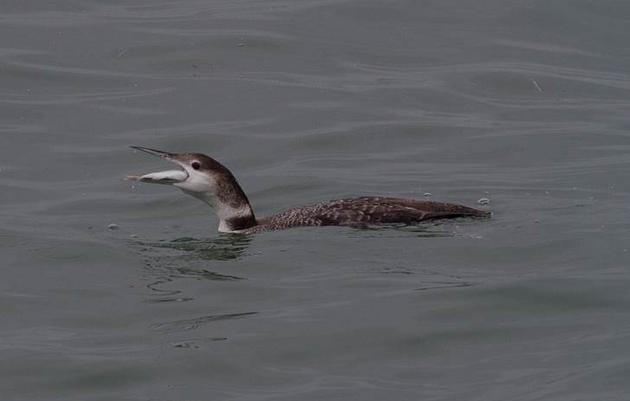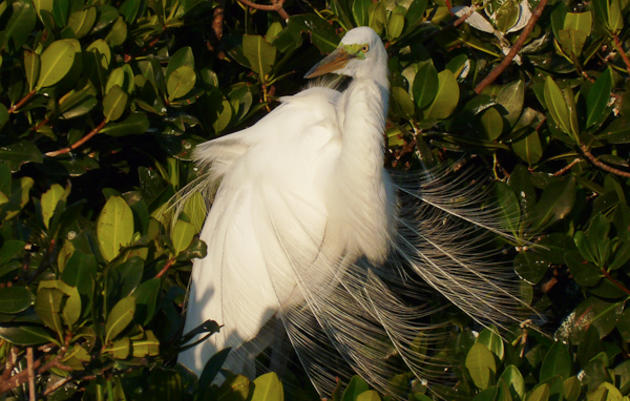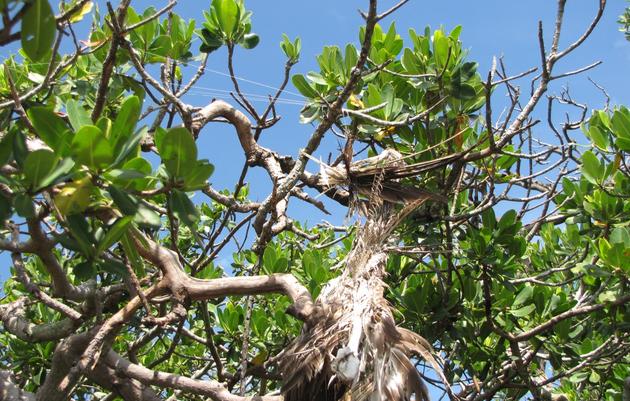Fishing line entanglement leads to injury and death of an untold number of coastal birds statewide – especially Brown Pelicans and Common Loons. A new cooperative outreach initiative has been launched by Tampa Audubon, Audubon Florida Coastal Islands Sanctuaries, and the Florida Fish and Wildlife Conservation Commission (FWC) to reduce bird entanglement and mortality through fishermen education.
A multi-year effort by Tampa Audubon volunteers working with the Skyway Fishing Pier State Park staff, Palma Sola Veterinary Hospital, area wildlife rehabilitators, and Skyway Pier Associates - the concessionaire - has drastically reduced the number of entangled birds at the Pier.
At most fishing piers, pelicans, herons, storks, and seabirds are routinely fed unused bait at the end of the fishing day which attracts birds to these areas where the potential for getting hooked or entangled is high. When birds eat the large bones of bigger fish carcasses, filetted and discarded by fishermen after a day on the water, they often suffer puncture of their throats, esophagus, stomach, or intestines, which can lead to a slow and painful death by peritonitis. Waterbirds are designed to ingest relatively small fish prey whole, which, dissolved by their stomach acids, are not a threat to their health.
In general, Audubon recommends that fishermen deposit fish carcasses below the water surface out of the reach of birds using PVC chutes installed at fish-cleaning stations, or better yet, remove cleaning stations from fishing piers.
If you don't feed waterbirds, they won't come – and young birds won’t learn that fishing piers are a food source. When a bird becomes entangled, fishermen can learn to help each other to land the bird, remove the hooks and line and set it free.
Bob Montanaro, a Pelican Island Audubon member, created a colorful, step-by-step pamphlet that shows how to safely hold, disentangle, and remove hooks from waterbirds. Thousands of copies have been printed and distributed with support from Pelican Island, Tampa, St. Pete, Lake Region, and Manatee Audubon chapters together with the Florida Park Service, the Duckwall Foundation, and TECO. The brochure can be downloaded from the Tampa Audubon or St. Pete Audubon websites.
FWC’s new website also includes step-by-step instructions and other information about fishermen can avoid catching waterbirds.
The three “R” steps are key components in keeping our seabirds healthy:
- REEL the bird in slowly to prevent further injury,
- REMOVE the hook by cutting the barb and backing the hook out, and
- RELEASE the bird if it is healthy.
Entanglement in fishing line is a serious threat to birds so this joint education program is an exciting initiative. Audubon encourages everyone to learn how to safely release an entangled bird as they may encounter a bird trapped in line one day, and that knowledge may save the life of that bird and others.








